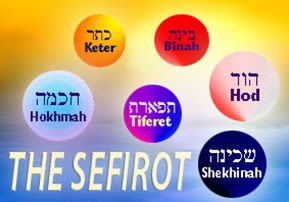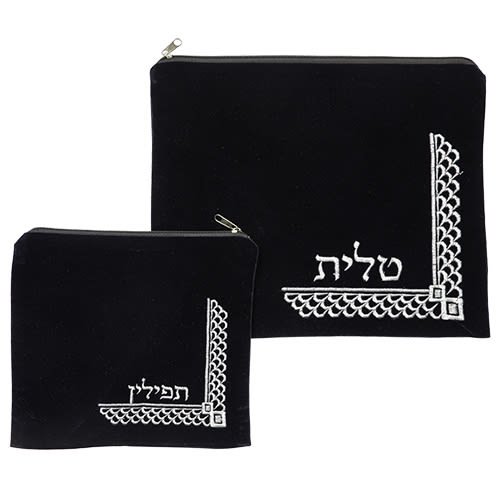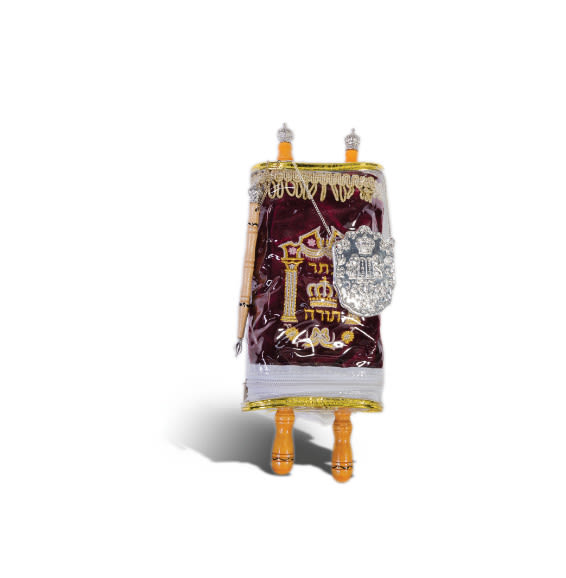
The Sefirot
We call the radiance that spreads from Him the "unfolding" or revelation of Godliness, and accordingly...

The Sefirot were an innovation in that they are visible lights, whereas Eyn Sof is not visible.
Opening 5: The Sefirot are lights that were permitted to be seen, which is not so in the case of the simple light of Eyn Sof, blessed be He.
The subject of all the investigations of the Kabbalah is the Sefirot. Therefore this is what must be explained first.
The proposition consists of two parts. Part 1: The Sefirot are lights. This tells us what the Sefirot are. Part 2: …which is not so in the case of the simple light. This tells us in what way the Sefirot are different in their nature from Eyn Sof. For in order to understand the Sefirot, it is necessary to understand in what way they were an innovation that was introduced for the sake of the creation: this is explained in Part 1. Initially, however, there was only Eyn Sof, blessed be He. If so, in order to know the Sefirot, it is necessary to know what was new about them that was not so originally, and which is not so in the case of Eyn Sof.
Part 1. The Sefirot are lights. It is through the Sefirot that Godliness "unfolds" or "extends". We cannot refer to the unfolding or extension (hitpashtut) of Godliness as anything but a radiation of light (He'arah). For the truth is that Godliness does not "extend", since the concepts of "extension" and "change" are not applicable to God. However, we call the radiance that spreads from Him the "unfolding" or revelation of Godliness, and accordingly, we say that the Sefirot are radiations of light.
Indeed we cannot call Godliness anything other than a radiation of light. In truth, no word, name or term is adequate to apply to Godliness. But since it is impossible to speak without words, we must call it by some name. However, we choose one that is somewhat less remote from Godliness than others. Light is the finest and most subtle of all physical phenomena, and accordingly it is less remote from Godliness than other phenomena. If so, the term "radiation of light" is the nearest we can choose. Even so, you must understand that we are not talking about a radiation of physical light. We are applying the term "radiation of light" only to give it some name.
…that were permitted to be seen. For the difference between the Sefirot and Eyn Sof, blessed be He is that it was made possible for the Sefirot to be "seen" (in the sense of being spiritually apprehended). This means two things. Firstly, it means that the Sefirot are capable of being seen, though this does not imply that the Sefirot must necessarily be visible, for indeed there are exalted Sefirot that are not visible even in the higher realms. What is implied is that they are fit and able to be seen. Should it happen that the spectator is prevented from seeing them, this does not detract from their nature of being potentially visible. However, the light of Eyn Sof, blessed be He, cannot be seen at all because of its intrinsic essence, which is unseeable.
Secondly, in saying that the Sefirot were permitted to be seen, we are not saying that they were intrinsically visible. The light of the Sefirot is not a particular kind of light that is visible in its intrinsic nature, as opposed to the light of Eyn Sof, blessed be He, which is not. What changed in the act of creation was that the Sefirot became visible. It became possible for them to be seen, because Eyn Sof wanted it so. If the light of the Sefirot was a particular kind of light that was visible in its intrinsic nature, we would have to say that the Sefirot were not an innovation. For what exists in something as part of its intrinsic nature is found in it throughout its existence. If the ability of the Sefirot to be seen were part of their intrinsic nature, then as long as the light of the Sefirot existed, it would have to be visible. What we must say is that the light of the Sefirot cannot have been new, but that the revelation of this light – the ability of the Sefirot to be seen – is what was new.
This is because the Sefirot are Godliness. Change from state to state is simply not applicable to Godliness. If so, the light of the Sefirot is not something new. The inference is that the light of the Sefirot was there from before. If the visibility of this light were part of its intrinsic nature, it would always have been visible. In that case, what was new? What was new was that God willed and made it possible for the light of the Sefirot to be seen. He gave this permission at precisely the moment He wished, not before. The change was not in the nature of Godliness. The change was in its being revealed to recipients.
From this you can understand why it is so appropriate to refer to the Sefirot as "emanated light" (ohr ne'etzal). For on the level of what the (spiritual) eye can see, light was emanated to our eyes – a light that could be seen. This was not the case at first. And if permission were granted to the eye to see it, we would come to recognize that everything has one root: Eyn Sof, Who cannot be seen. There is one light that exists through Him on a level such that it can be seen, and this is the light of the Sefirot. If so, let us call it a light that emanated from Ayin – from "No-thing", i.e. from that which cannot be conceived.
Part 2. Which is not so in the case of the simple light of Eyn Sof, blessed be He. The "simple light" is that which simply cannot be described, defined or categorized in any way. It is impossible to say anything about His light. Since there is no word or name fit to be applied to Eyn Sof, blessed be He, we will refer to Him in the only way that we can, using the expression "simple light". However, we qualify this by negating any limitation that may appear to be implied in Him on account of the term we have chosen. For in truth, no such limitation is intended. Thus we say that the light of Eyn Sof cannot be seen. This is the difference between Eyn Sof, blessed be He, and the Sefirot.
To be continued.
To purchase The 138 Openings of Wisdom, click here.
(Rabbi Avraham Greenbaum is the director of Azamra (http://www.azamra.org/).














Tell us what you think!
Thank you for your comment!
It will be published after approval by the Editor.